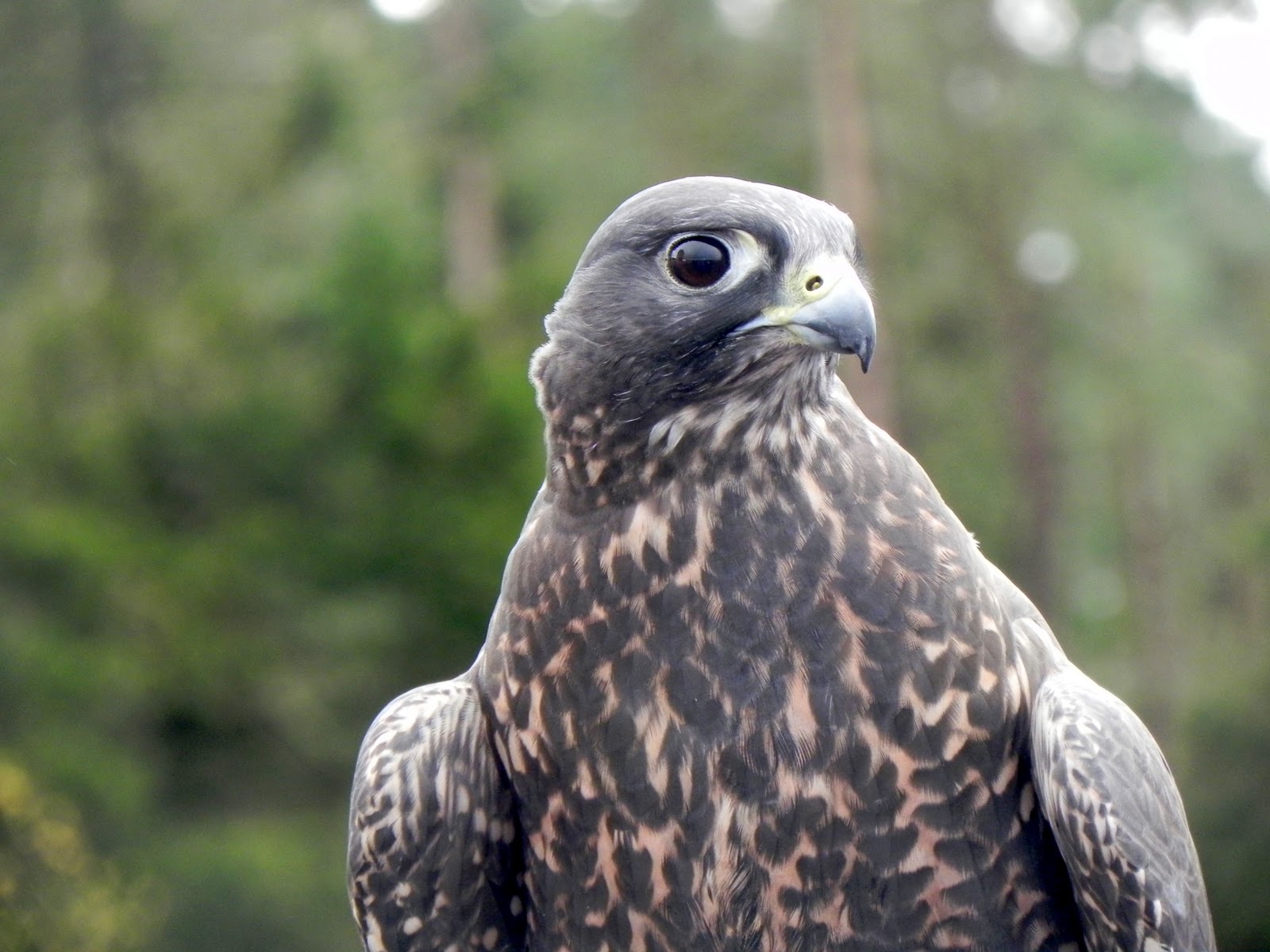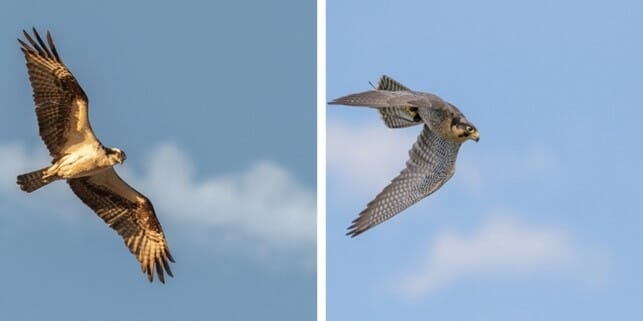

The air pressure from a 200 mph (320 km/h) dive could possibly damage a bird’s lungs, but small bony tubercles in a falcon’s nostrils guide the shock waves of the air entering the nostrils (compare intake ramps and inlet cones of jet engines), enabling the bird to breathe more easily while diving by reducing the change in air pressure. Once prey is spotted, it begins its stoop, folding back the tail and wings, with feet tucked. It searches for prey either from a high perch or from the air. It requires open space in order to hunt, and therefore often hunts over open water, marshes, valleys, fields and tundra. Nocturnal migrants taken by Peregrines include species as diverse as Yellow-billed Cuckoo, Black-necked Grebe, Virginia Rail and Common Quail. The Peregrine Falcon hunts at dawn and dusk, when prey are most active, but in cities also nocturnally, particularly during migration periods when hunting at night may become prevalent. Other common city birds are also taken regularly, such as Mourning Doves, Common Swifts, Northern Flickers, Common Starlings, American Robins and various corvids. In urban areas, the main item of the Peregrine’s diet is the Rock or Feral Pigeon, which comprise 80% or more of the dietary intake for peregrines in some cities. Insects and reptiles make up a small proportion of the diet, which varies greatly depending on what prey is available. In the Brazilian mangrove swamp of Cubatão, a wintering falcon of the subspecies tundrius was observed while successfully hunting a juvenile Scarlet Ibis. Other than bats taken at night, it rarely hunts small mammals, but will on occasion take rats, voles, hares, mice and squirrels the coastal populations of the large subspecies pealei feed almost exclusively on seabirds. In North America, prey has varied in size from 3-g hummingbirds to a 3.1-kg Sandhill Crane (killed by a peregrine in a swoop). Worldwide, it is estimated that between 1,500 and 2,000 bird species (up to roughly a fifth of the world’s bird species) are predated by these falcons. The Peregrine Falcon feeds almost exclusively on medium sized birds such as doves, waterfowl, songbirds, waders and pigeons. The immature bird is much browner with streaked, rather than barred, underparts, and has a pale bluish cere. The upper beak is notched near the tip, an adaptation which enables falcons to kill prey by severing the spinal column at the neck. The cere is yellow, as are the feet, and the beak and claws are black. The top of the head and a “mustache” along the cheeks are black, contrasting sharply with the pale sides of the neck and white throat. The tail, colored like the back but with thin clean bars, is long, narrow and rounded at the end with a black tip and a white band at the very end. The underparts are white to rusty and barred with thin clean bands of dark brown or black. The back and long, pointed wings of the adult are usually bluish black to slate gray with indistinct darker barring (see “Subspecies” below) the wingtips are black.

The male and female have similar markings and plumage, but as in many birds of prey the Peregrine Falcon displays marked reverse sexual dimorphism in size, with the female measuring up to 30 percent larger than the male] Males weigh 440–750 g, and the noticeably larger females weigh 910–1500 g for variation in weight between subspecies, see under that section below. The Peregrine Falcon has a body length of 34 to 58 centimetres (13–23 in) and a wingspan of around 80 to 120 centimetres (31–47 in). This makes it the world’s most widespread bird of prey.īoth the English and scientific names of this species mean “wandering falcon”, referring to the migratory habits of many northern populations. It can be found nearly everywhere on Earth, except extreme polar regions, very high mountains, and most tropical rainforests the only major ice-free landmass from which it is entirely absent is New Zealand. The Peregrine’s breeding range includes land regions from the Arctic tundra to the Tropics. As is common with bird-eating raptors, the female is much bigger than the male.Įxperts recognize 17–19 subspecies, which vary in appearance and range there is disagreement over whether the distinctive Barbary Falcon is a subspecies or a distinct species. It can reach speeds over 322 km/h (200 mph), making it the fastest animal in the world.

It is a large, crow-sized falcon, with a blue-gray back, barred white underparts, and a black head and “moustache”. Birds of Prey … Falcon Information … The Sport of Falconry The Peregrine Falcon ( Falco peregrinus), also known simply as the Peregrine, and historically as the “Duck Hawk” in North America, is a cosmopolitan bird of prey in the family Falc o nidae. Introducing the fastest bird in the world …


 0 kommentar(er)
0 kommentar(er)
